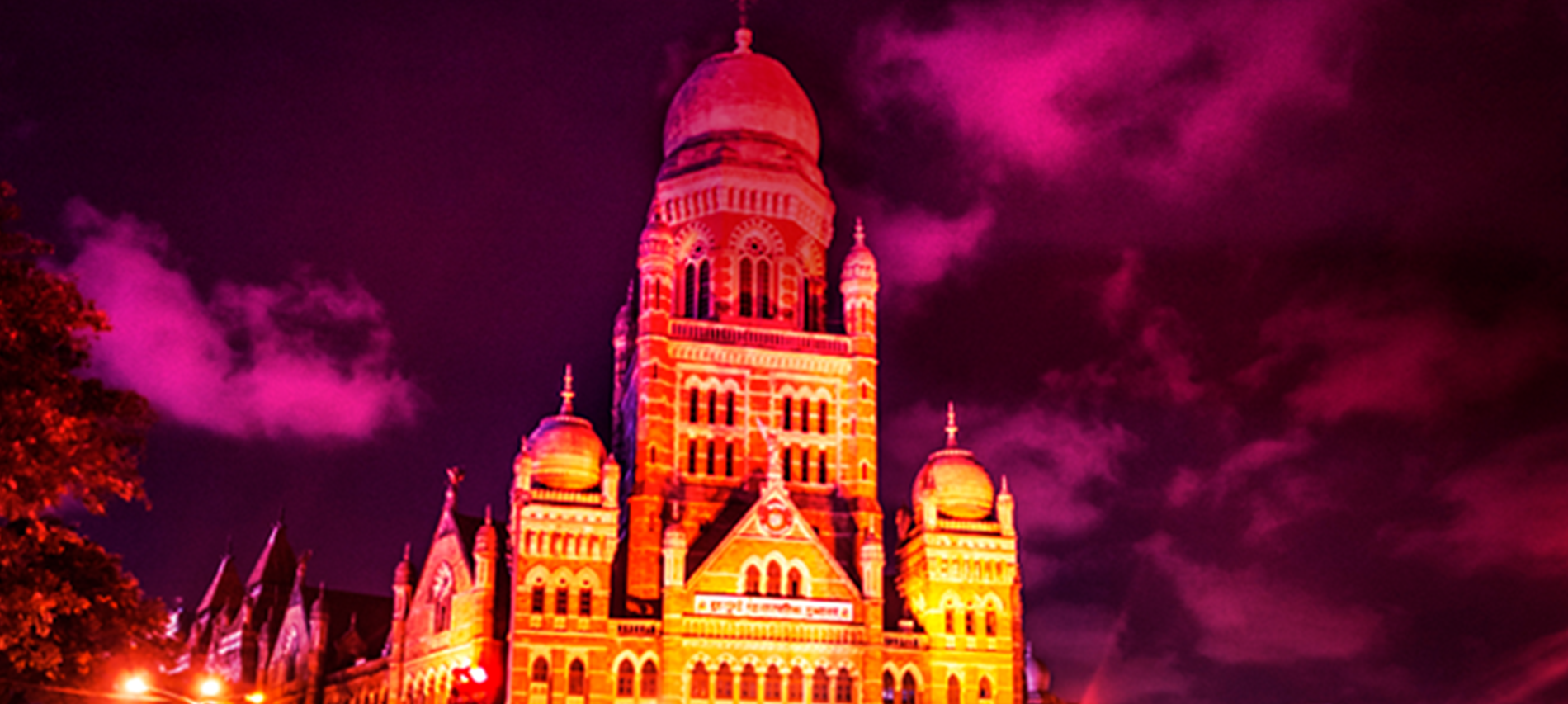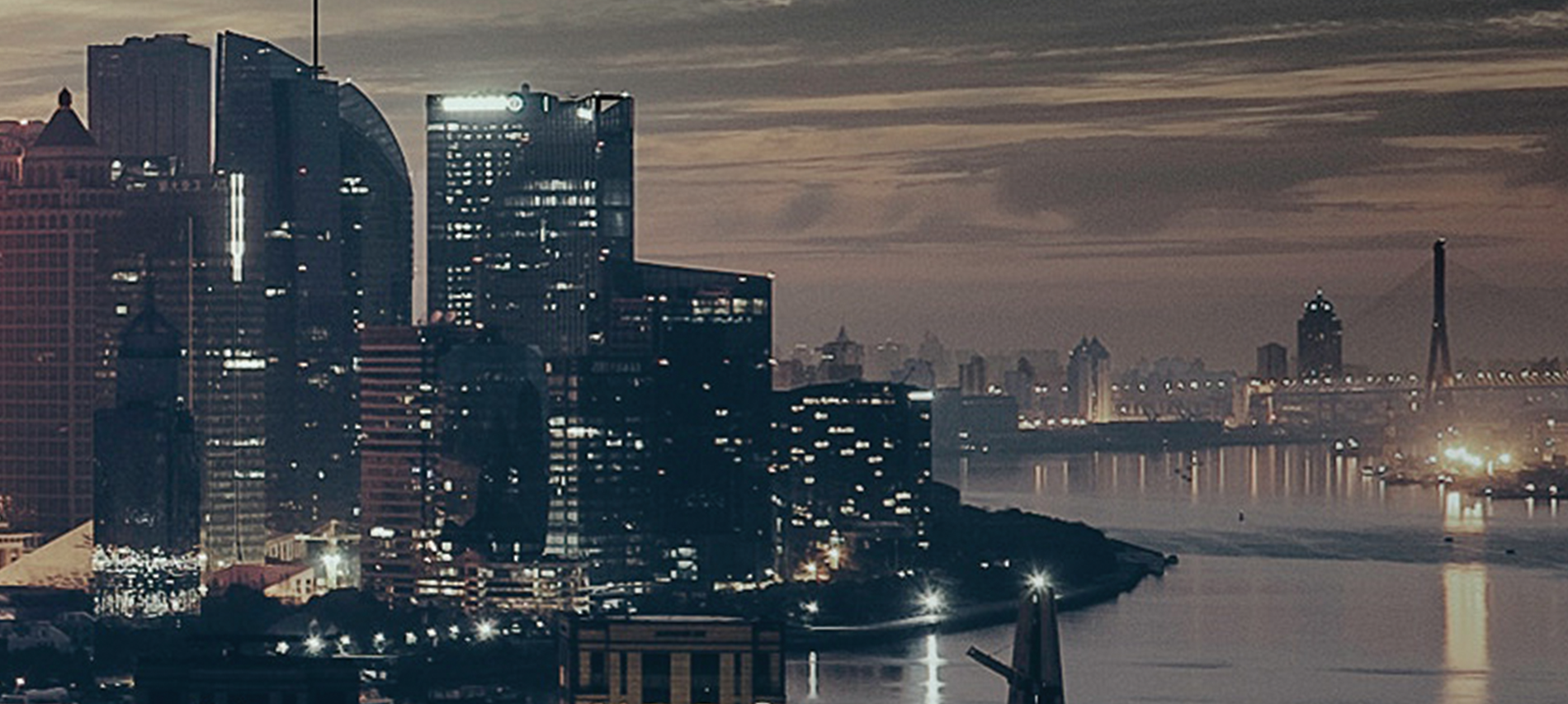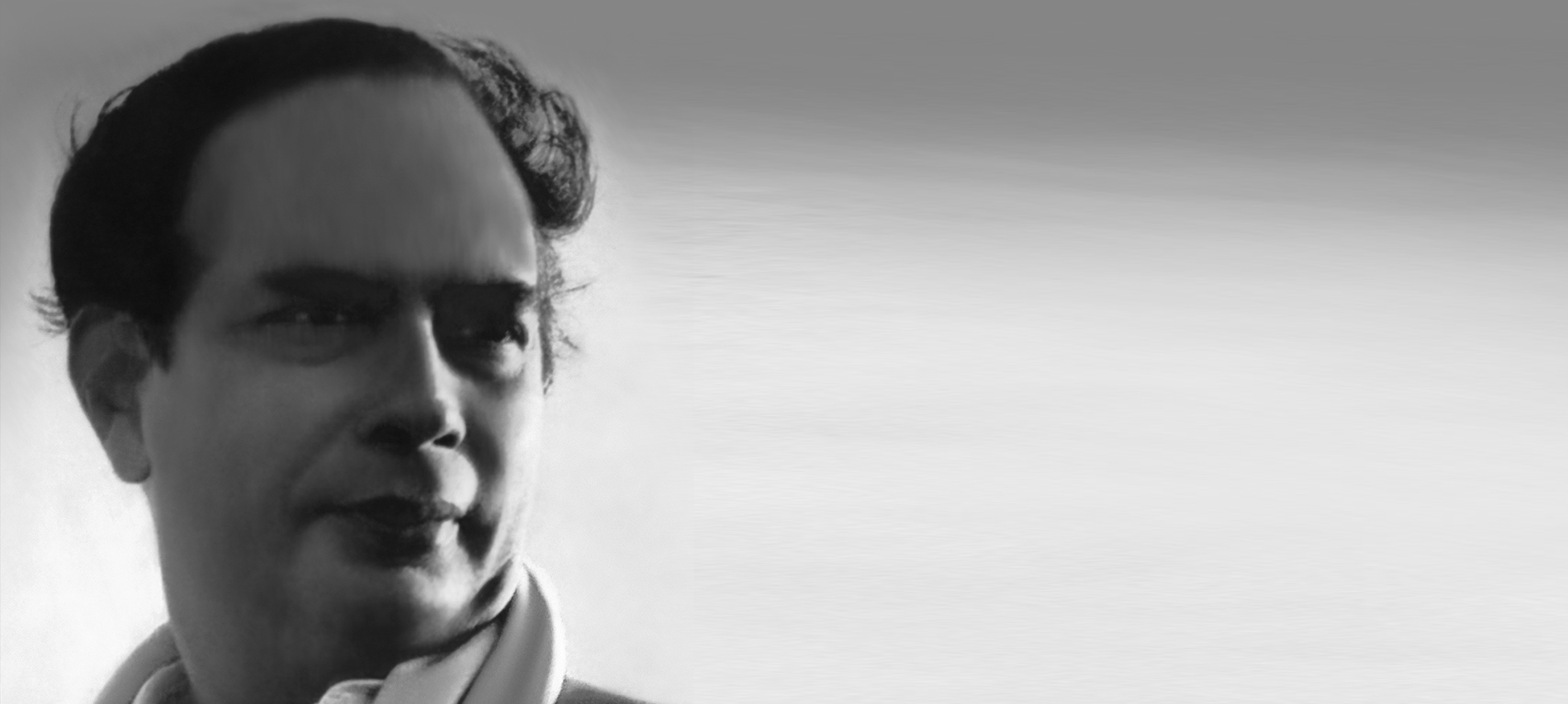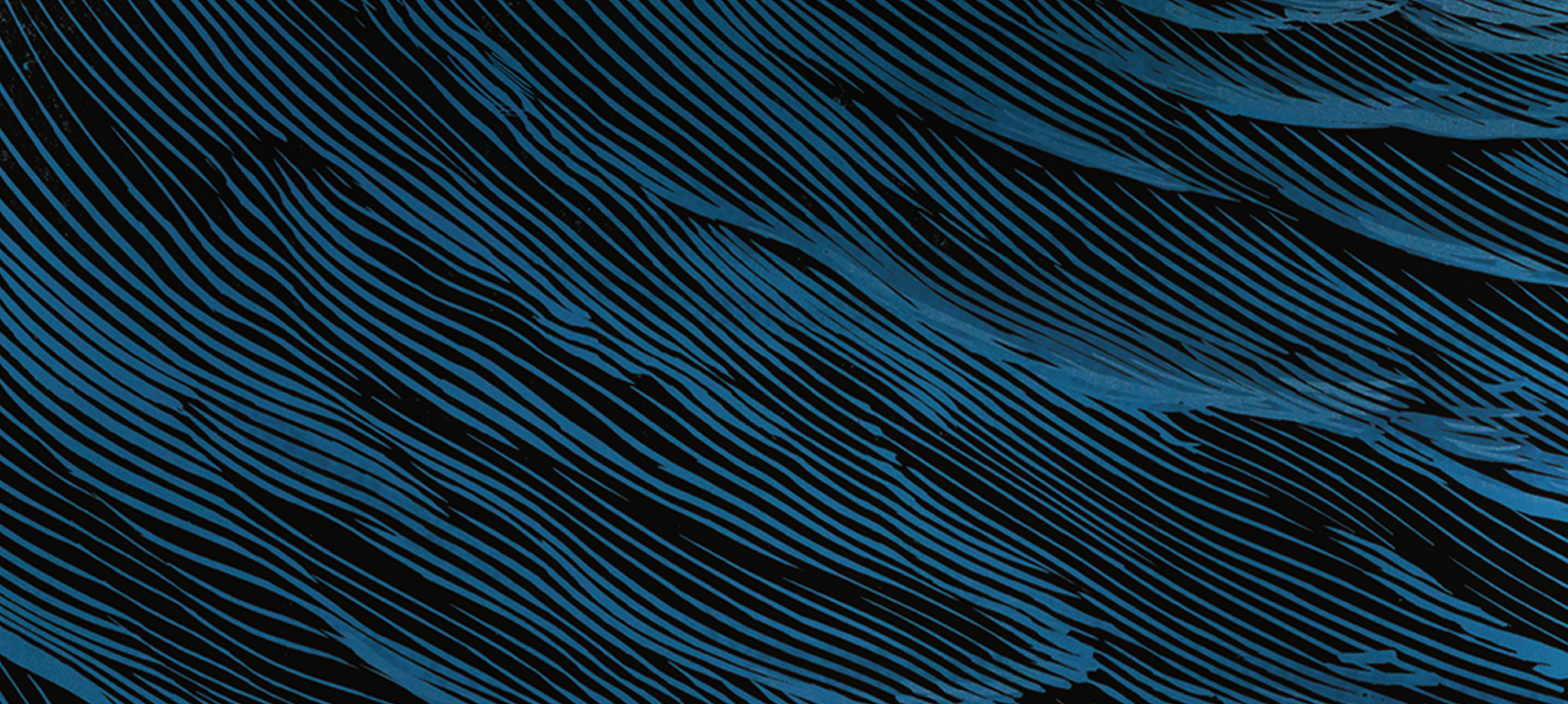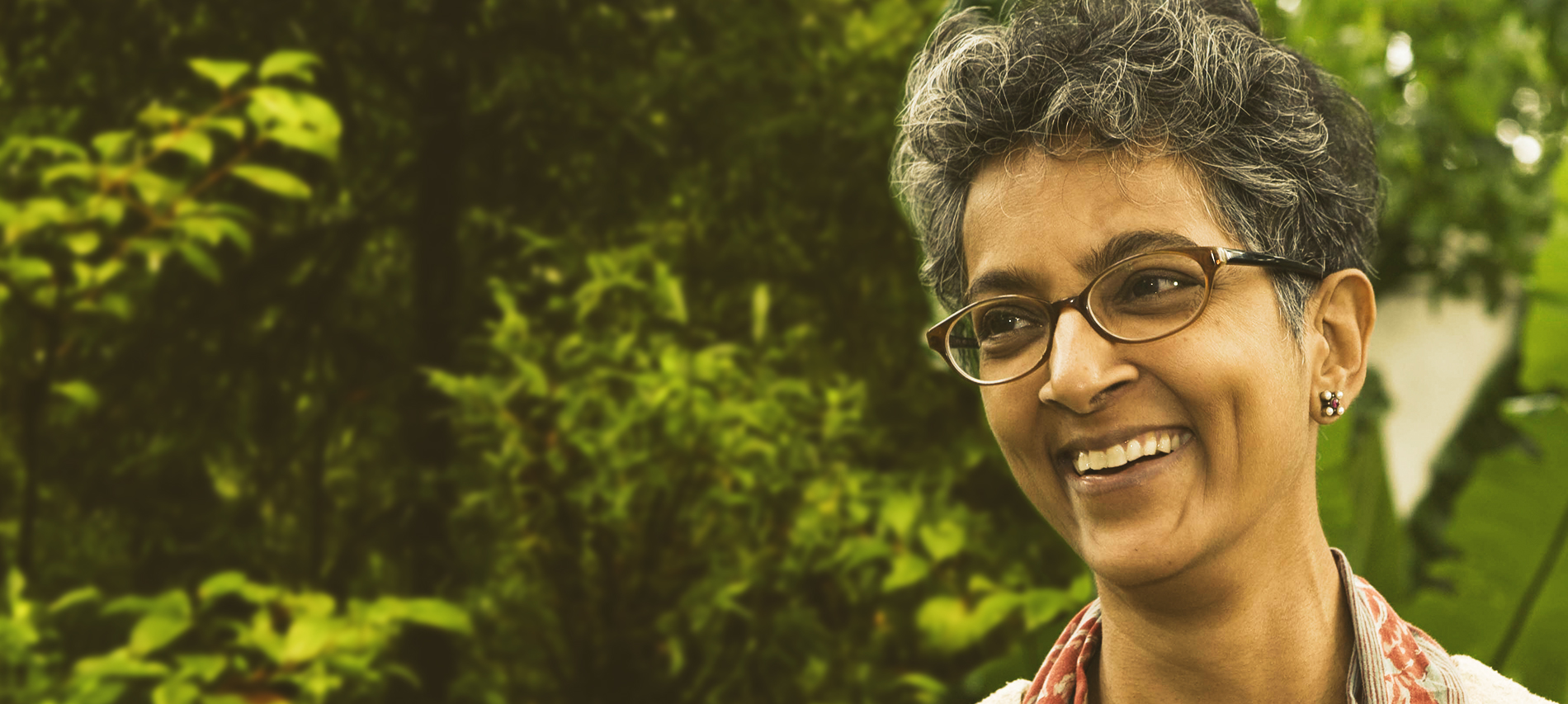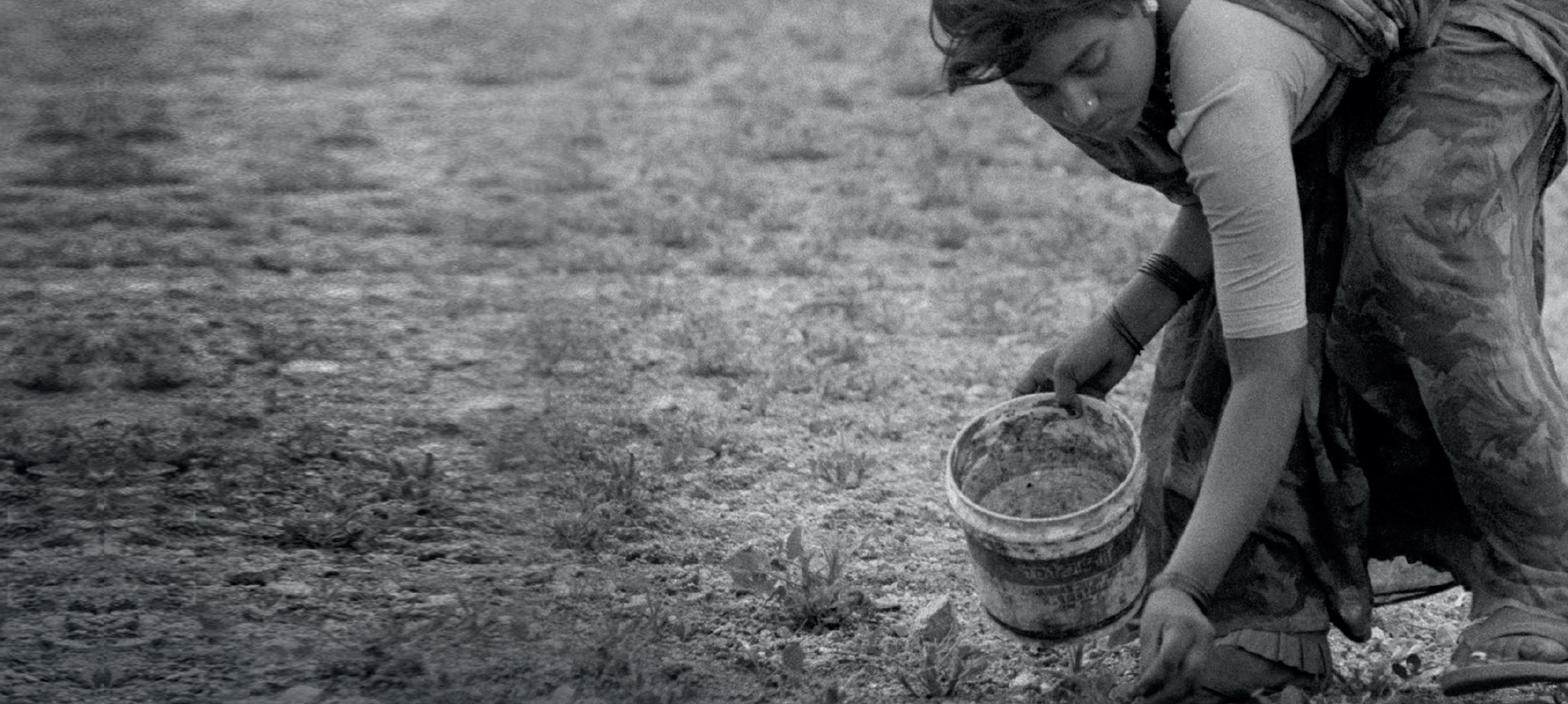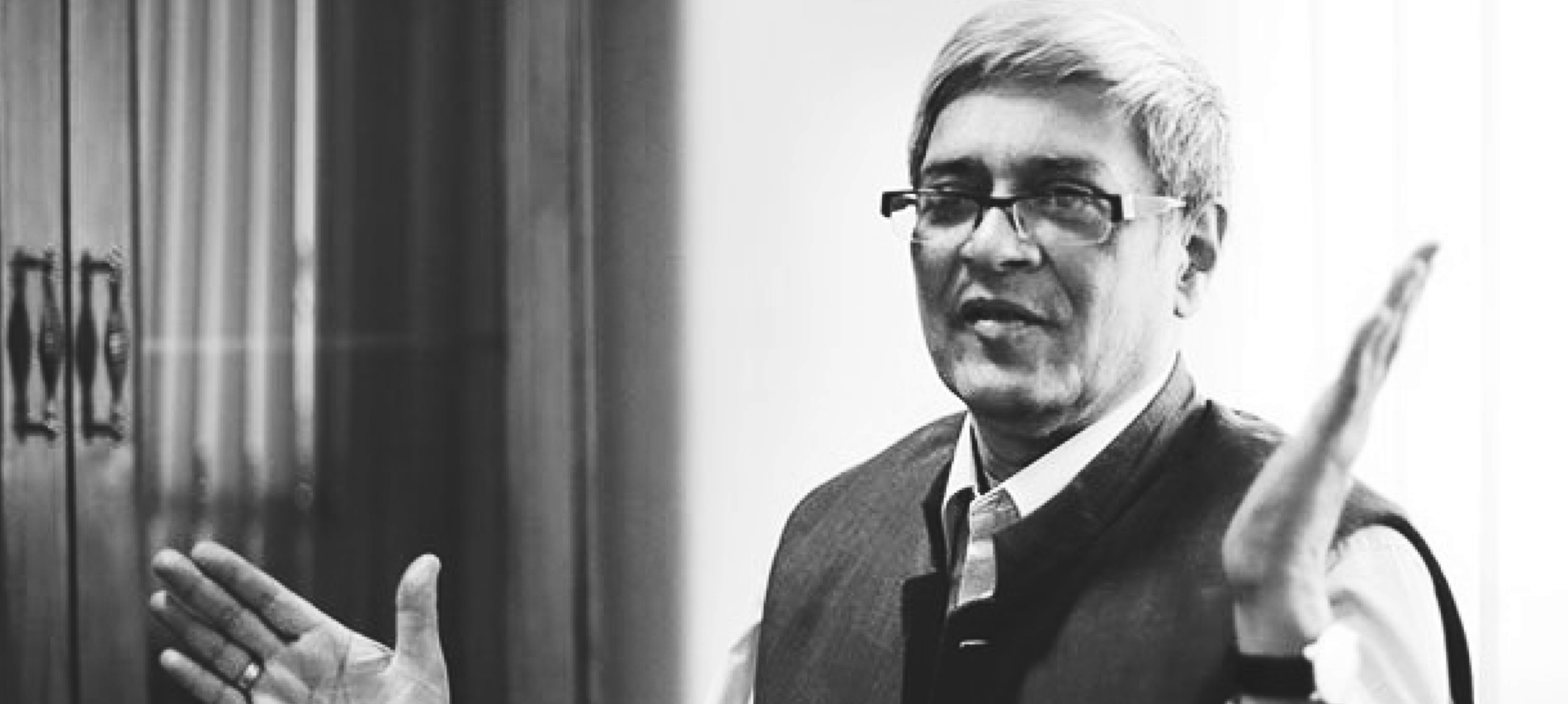Prior to pursuing writing, Issac led the marketing team at PUMA India for four years. In 2015, Pitch magazine nominated Issac as one of the Top 10 Young Marketers in India. Issac’s debut book, Buffering Love, is a collection of 15 short stories that has characters cling on to their mobile phones, sometimes to crush reality and sometimes to embellish it. Set in urban India and replete with surprising turns, these stories will delight and devastate its readers in equal measure.










You can follow Issac on his Instagram handle here.

Tag: Penguin Random House
Discovering the Vedas: Origins, Mantras, Rituals, Insights; An Excerpt
Frits Staal wrote about language, philosophy and ritual but his scientific pursuits have encompassed diverse areas and disciplines. His book, Discovering The Vedas: Origins, Mantras, Rituals, Insights, shows that the Vedas have a logic all their own. Accessible, finely-argued and with a wealth of information and insight, this book is for both the scholar and the interested lay reader.
Here’s an excerpt from the new introduction of this highly revered book.
—————
The Vedas are often puzzling; sometimes abstract or mysterious; they may also be muddled; but those are the exceptions, not the rule. They overflow with information, much of it concrete. Part I of my book extracts such information from the Oral Tradition but also from archaeology. It deals with Vedic people and their language, what they thought and did, and where they went and when. Part II, almost twice as long as any of the others, provides essential information about the canonized four Vedas as we know them. It includes selections and translations. Part III seeks to discover and understand not only the facts and where they come from, but what they mean. It is analytic and attempts to shed light especially on mantras and ritual, about which many absurd statements circulate (ingayanti as the Rigveda puts it: like words moving around in a sentence). Mantras and rituals are the main channels through which Vedic contributions entered what came to be known as Hinduism.
Part III does not arrive at definite conclusions because I do not believe that we know and understand enough. Part IV tries to answer a rarely asked question: what can we learn from the Vedas? I do not advocate a Vedic lifestyle, but believe that there are things the composers of the Vedas knew and we do not. They include the original forms of the Vedic sciences and the meaning of bráhman. Part V, the concluding part, puts the Vedas in perspective in a wide ranging comparison with Indic philosophies and religions, primarily Buddhism.
Before going further, I should say something about myself and my work. In the realm of non-fiction, creativity thrives on specialization, yet I have always been convinced that the distinctions between letters, sciences and other manmade subdivisions and disciplines are arbitrary. The seeds for these beliefs were planted during World War II in Amsterdam. Though I count myself as a citizen of the world, and not a native of any particular country, it is in this cosmopolitan city that I attended a Gymnasium. We did do gymnastics there though we were not naked (Greek gumnos), but concentrated on mathematics, physics, chemistry, biology, history, geography and several languages. Our teachers were not only teaching us these subjects, they were lively and eccentric men and women who were interested in developing our minds. The number of languages we learnt might baffle an Anglo-American, but not an Indian. In addition to Dutch, we were taught English, French, German, Greek, Latin, with optional Italian and Hebrew. To this I added Arabic which I continued to study at the universities of Amsterdam and Leiden.
Languages are the gateways to civilizations. I did not care for literature, but languages may be studied for a variety of reasons. The primary appeal of Arabic had been the beauty of its flowing calligraphy. Without it, I would not have read al-Khwarizmi’s treatise on algebra under the tutelage of a famous scholar. When I was younger, I had played about with Chinese characters; but did not continue, perhaps because I sensed that it might take a lifetime to learn them. The first three languages we learned to read and write at the Gymnasium were English, French and German. The last was the easiest but was not popular because of the German occupation. At the university, its horrors stayed fresh in our minds; but now we began to see similarities with the Dutch colonial empire. These acts might have been of a milder sort, but were detailed where necessary by the Indonesian students in our midst. The classical languages, five years of Latin and six of Greek, belonged to a more idealized world. But not one of dreams, because it gave access to ancient civilizations and especially to Greek philosophy which became my favourite. I continued with Greek philosophy at the University of Amsterdam, where I combined philosophy and mathematics which led to the first subject I studied in greater depth: mathematical logic. It was the time of L.E.J. Brouwer in intuitionistic mathematics, Kurt Gödel and Alfred Tarski in logic and foundations.
Amsterdam itself was, of course, ‘a center of culture’, though no one called it that. If I now try to remember how that quality appeared to me when I was young—a flavour that has evaporated in the course of more recent visits—I recall only the facts. When I walked from my home to the Gymnasium, I passed the Concertgebouw and sniffed the dusky air beneath the large passage gateway of the Rijksmuseum. I had been at home in the Concertgebouw since I was five years old. My violin teacher took me there during rehearsals when I was allowed to sit on a podium chair. I heard and saw all the great conductors of Europe before my legs could reach the floor. All of it prepared me to play the violin and viola in the student’s orchestra and in string quartets and quintets. These are perhaps the ultimate reasons that I added a fifth part to a book about the four Vedas.
—————

6 Things You Didn’t Know About How India Became Democratic
Ornit Shani is senior lecturer at the Department of Asian Studies, University of Haifa. She received her PhD from the University of Cambridge. Her new book How India Became Democratic: Citizenship and the Making of the Universal Franchise tells the untold story of the preparation of the electoral roll on the basis of universal adult franchise in the world’s largest democracy.
Here are a few interesting facts from the book we bet you didn’t know.
The Impediment of the Bureaucratic Colonial Imagination

Registering Partition Refugees

Universal Franchise connected the Indian people to the idea of a nation

The birth of the electoral roll during the mayhem of Partition

Disciplining the Federal structure

The Limits of Inclusion

How many facts did you know already?

5 Quotes Which Prove Why Bombay is called the Maximum City
Suketu Mehta is a New York based author and an associate professor of journalism at New York University. His book, Maximum City: Bombay Lost & Found, was a finalist for the 2005 Pulitzer Prize. In this landmark biography, Suketu Mehta gives us an insider’s view into one of the world’s most dynamic and exciting cities.
Here are 5 poignant quotes from this celebrated book.
The Doppelganger Effect

The City of Dreams

Living in the Bubble

The Forbidden Quarters

The City that Never Sleeps

The definitive portrait of Mumbai in the 21st century, this timeless classic is a must have on your reading list!

Ashoka in Our Time; An Excerpt
Bruce Rich is an author and lawyer who has worked with major US environmental groups as well as with international organizations over the past three and a half decades. His book, Ashoka in Our Time: The Question of Dharma for a Globalized World, offers a compelling critique of the forces of globalization that, while connecting the world in unprecedented ways, have deprived us of a unifying dharma. Rich looks for answers to contemporary issues in the paradoxes of Ashoka’s empire, as well as in the ideas of thinkers from across the ages.
Here’s an excerpt from the new preface of this exemplary book.
————————-
This book was first published in India in early 2008, months before the full magnitude of the global economic crisis became apparent. The severity and unexpectedness of the crisis only accentuated for more and more people the realization that a global economy requires a global ethic. A global order that one-sidedly prioritizes unbridled market forces over other social values has created a profoundly unstable world, a world where the viability of whole societies, nations and democracy itself can be put at risk. As economies slowly recovered and stabilized, the global and local structures of political economy reflecting this order have intensified economic inequality, social insecurity and the dissolution of traditional communities. The reaction in many societies worldwide has been a growing quest for identity, community and justice, an evolution that holds great promise but also great menace. Our world is nearing a juncture where every citizen may be faced with a choice between embracing a more pluralistic, open, ecumenical social and political ethic or a flight into reactionary nationalism, ethnic and religious fundamentalism, and a futile embrace of authoritarian pseudo-solutions.
In researching and writing this book over a decade ago, I sought to better understand the challenges facing our present age by examining the ethics and governance of one of India’s—and humanity’s— archetypal figures, Ashoka. The Maurya Empire of Ashoka’s epoch was a multi-ethnic realm with a multitude of differing religious and philosophical beliefs, including even in some cases sects espousing an agnostic or atheistic materialism. Ashoka’s ethic of Dharma embodied public values that would enable the inhabitants of what was then the world’s largest empire to live and prosper together in a time of social and economic change.
This book begins with what in 2008 was a timely vignette on the world geopolitical scene: a reference to the fundamentalist violence in Afghanistan and the violent reaction it provoked through the invasion by the US and allied troops, in poignant contrast to the peaceful, multicultural polity reflected in the Ashokan inscriptions one can still see in south-eastern Afghanistan. I never thought we would be witnessing an exacerbation of almost exactly the same situation in 2017, including a recent increase of US troops in Afghanistan to attempt to deal with similar threats. Over the past decade, ethnic and sectarian violence has proliferated, with destabilizing effects that ripple out across the globe. The conflict in Syria and the persecution of a Muslim minority in Myanmar—a country whose Buddhism long ago was inspired by Ashoka—are just two of the many symptoms of a humanity that is globalized and tearing itself apart at the same time.
Nor would I have imagined that in major countries all over the world we would witness a growing resurgence of nationalistic, xenophobic and, in some cases, outright neo-fascist political movements. This reaction to the social effects of one-sided economistic market fundamentalism was astutely examined by Karl Polanyi over seventy years ago.
The global environmental crisis has only accelerated as evidence of climate change is increasingly visible. Like the inequalities and imbalances in the global political economy, climate change also can only be addressed by concerted action that prompts changed economic priorities and values in every nation and community on the planet.
In short, what we witness around the world is a search for what might be called a unifying ideology of ‘dharma’. This is the dharma that Ashoka sought, a concept or construct of ethics, law and community which establishes guiding values for individuals and society.

Bimal Roy: The Man Who Spoke In Pictures; An Excerpt
Rinki Roy Bhattacharya has cinema in her veins, daughter of Bimal Roy, she married Basu Bhattacharya and collaborated on his films. Her book, The Man Who Spoke in Pictures, shows Roy’s spare storytelling and nuanced understanding of the human condition that are reflected in classics like Devdas, Sujata and Madhumati. In this book, his Bombay years are recorded through a collection of analyses and anecdotes from leading literary and cinematic luminaries, including Nayantara Sahgal, Gulzar, Naseeruddin Shah and Khalid Mohammed.
Here’s an excerpt where Shashi Kapoor reminisces his fondest memories of Dada.
———————————————
I was little more than a boy when I first met Bimalda. I think it was at a movie premiere that we first met. He was a soft-spoken gentleman and I still remember his interesting eyes. By 1959, I was on my own with a small family and urgently in need of work, and of course, money.
We met again at a dinner at the Ritz Hotel in Churchgate. The Filmfare magazine had organized a talent contest; I did not go for the contest but went to the dinner later. I had to borrow a Jodhpuri coat for the occasion from Tiger (the Nawab of Pataudi). Within a week of this meeting I got a message from his company, Bimal Roy Productions, that he wished to meet me. I rejoiced at this news and literally flew to meet Bimalda at Mohan Studios.
Many of his assistants had assembled outside his room. Amongst them were Hrishida, Basu, Raghunath Jhalani and S. Khalil. They informed me that Bimalda was going to start two new films Bandiniand Prempatra (a remake of the successful Uttam–Suchitra Bengali film Sagarika). They suggested that I choose Prempatra as it had a good romantic role. For me, there was no question of choosing. Uppermost on my mind was the irresistible longing to work with Bimalda. Finally, I stepped into his room. He was having a quiet smoke, and after a long silence he said,‘Shoshibabu, ek picture banayga. . . I want you.’ I said, ‘Yes.’ Since that day when I first met him, I knew we liked each other. I was young, eager and excited at the prospect of working with Bimal Roy.
When I came out I met his assistants, all still sitting outside the room. They were curious to know. Gulzar asked me, ‘What happened?’ I said: ‘Dada is asking for dates.’
‘For which one?’ they asked me. I said I did not know. Dharam (Dharmendra) was also waiting outside Bimalda’s room. After almost a month we heard that Dharam was to be cast in Bandini while I was selected for the romantic lead in Prempatra. One day Bimalda asked me how much money I expected. I, quite frankly, felt awkward about talking money with him. He sensed my discomfort and said, ‘All right, tell me how much money is B. R. Chopra Productions paying you?’
‘Twenty-five thousand,’ I answered.
He was surprised and asked, ‘Are you sure they will pay you so much?’
‘Yes, they are pretty big producers,’ I replied
‘All right,’ he said. ‘I will pay you the same.’
Then shooting for Prempatra started. Bimalda, being the shy person he was, had forgotten to introduce me to Sadhana, the heroine. It was also her big film. So we introduced ourselves. I realized that whenever Bimalda was pleased with me, I would get to share his tea—special tea made and served by his man Friday, Ganpat. I was very proud to share his tea. Later, during the filming of Benazir, Meenaji was also invited to share his tea. We were both pleased by Bimalda’s affection for us.
I must tell you about another interesting incident. I was going to England in 1961 and Dada wanted some ambience shots taken in London for Prempatra. I was touched by the incredible faith he showed in me. He explained that due to the economic constraints and tight shooting schedule of Bandini he could not go to London. He explained the required shots and made me write them down, gave directions explaining the shots in detail. I protested, ‘Dada, but I have never shot a film.’
He simply said, ‘I know you can do it, I have seen you on the sets and know you can do it. My man in London will contact you, organize the camera but you take your own shots.’
‘All right, if you say so,’ I replied. We took the shots and some of them were used in the film.
Prempatra did not fare too well at the box office. That made Bimalda feel guilty, I do not know why, and whenever we would meet socially at premieres or other places, he would say, ‘Phirse tumko lega, hum ek saath kaam karega. . . you are one of us at BRP.’

9 Things You Should Know About Philip Pullman’s ‘The Book of Dust’
Philip Pullman is one of the most highly acclaimed children’s authors. He has won many accolades and has been shortlisted for almost every major children’s book award. His awards include the Smarties Prize (Gold Award, 9-11 age category) for The Firework-Maker’s Daughter and the prestigious Carnegie Medal for Northern Lights. He was the first children’s author ever to win the Whitbread Prize for his novel The Amber Spyglass.
The Book of Dust marks his return to the world of His Dark Materials. Here are 9 things you should know about the first volume of the series:









Aren’t these fascinating?

In conversation with the author of Reversing Diabetes in 21 Days, Dr Nandita Shah
Dr Nandita Shah is the founder of Sanctuary for Health and Reconnection to Animals and Nature (SHARAN) and has thirty-six years of experience in treating patients. In her new book, Reversing Diabetes in 21 Days: A Nutrition-Based Approach to Diabetes and Related Problems, based on her revolutionary diabetes reversal programme, the renowned homeopath elaborately breaks down the real cause of diabetes using scientific evidence and intelligently outlines a routine that will not just prevent the disease but also reverse it.
Here’s an interview with the esteemed author:
1. Why did you choose diabetes and not any other disease to write about?
Although my goal as a doctor is to help people live a life without medicines, no matter which illness they suffer from, there are several reasons why I chose to write about diabetes. Firstly, the incidence of this hormonal problem has exploded in India. Unlike 50 years ago, today, almost every family has a member with diabetes and it is affecting even younger age groups. I have seen children aged 14 with type II diabetes!
Unlike in the case of heart disease and cancer, or autoimmune diseases, nobody is fearful of diabetes. Most people would be willing to give healthy food a chance! Also, in the case of diabetes the progress can be tracked very easily with a glucometer and results are tangible within just days or weeks. This motivates the patient to continue and get even higher results.
2. Tell us about the most remarkable success story of your revolutionary diabetes reversal programme.
If you had asked me this even five years ago, I may have been able to tell you something. But now, I see or hear of people reversing diabetes everyday. I’ve seen people on multiple medications and insulin get free of most of these medications as well as the insulin, during our 21 day health retreats. The joy and freedom that they experience after years of being dependent on medicines is remarkable! And it’s not just that, there’s also the cost involved. One of my patients who after many years got free of medicines for diabetes and high blood pressure, was taking medicines worth Rs 17,000 each month! Imagine the amount of money that can be saved just by making simple lifestyle changes and eating delicious food.
3. What other diseases are you planning to write about?
Actually all diseases can be cured by adopting similar principles. Today, I’m seeing a lot of patients with cancer. This is much more complex, because of the sheer fear involved and multiple causative factors. However, it’s very rewarding when patients are able to trust and see their cancers, including metastasis, recede, simply by following the principles of natural healing. I think this would be my next step because of the number of people that could be benefited. Like diabetes just a few years ago, today the number of cases of cancer is exploding.
4. Does your book address anything about homeopathy?
No, not really. My goal today is to help people become their own best doctors. I consider homeopathy to be a very serious and difficult art of healing. It requires a lot of studying, understanding, and yet it can be quite subjective, making it difficult for the layperson to use it successfully.
After years of homeopathic teaching and practice, today I, myself, rarely use homeopathy. If just changing our diet and lifestyle can make such big inroads into healing, why bother with anything else? What I like best is that with this method patients can take their health into their own hands, where it belongs. Besides, you can’t solve a problem without removing the cause and the cause of disease is never lack of medication (not even homeopathic medications).
True reversal means being healthy without any medicines.
5. How long did it take you to research and come up with the step-by-step plan to reverse diabetes?
I have to admit that this approach to reversing diabetes is not original. There are many doctors in the world who are using this method to help their patients reverse diabetes. My introduction to this method came from Dr Neal Barnard first and then others like Dr Gabriel Cousens. I could understand it easily because I had already been working with natural healing methods with myself and with my patients. Since the results are almost guaranteed, it’s very motivating both for the doctor as well as the patient. I’ve been following this lifestyle for more than 15 years now and advising it to my patients. The learning is never complete. I’m always learning something new from the best teacher in the world, Nature.
Interspersed with testimonials, stories and real-life experiences of past participants, this book will show you that type 2 diabetes and many cases of type 1 diabetes are indeed reversible!

Everybody Loves a Good Drought (20th anniversary edition), An Excerpt
Palagummi Sainath has been a journalist and reporter for thirty-seven years and has covered rural India full time for twenty-five of those. His book, Everybody Loves a Good Drought, is the established classic on rural poverty in India. Twenty years after publication, it remains unsurpassed in the scope and depth of reportage, providing an intimate view of the daily struggles of the poor and the efforts, often ludicrous, made to uplift them.
Here’s an excerpt from the new introduction to this critically acclaimed work.
———————————-
One of the first things people who have read Everybody Loves a Good Drought ask me is: ‘How did you come to give this book its name?’ I didn’t. I just grabbed the idea from Ramji Lakhan. He was a peasant activist who organized agricultural labourers to fight for their rights in Palamu (then in Bihar, now in Jharkhand).
‘We have a great drought going here,’ he told me. ‘The big people are making much money out of it. And the Block Development Officer (BDO) has gone to harvest the Third Crop.’
I was mystified. ‘I know of the kharif crop, harvested in autumn after the rainy season. And I know of the rabi, sown in winter and harvested in spring. But what is this Third Crop?’
‘Drought relief,’ said Ramji. He’d been hoping I would ask. ‘The money that comes in as relief makes the powerful richer than they were. It’s quite a good business. We like a good drought here.’
He called the BDO the BTDO, or Block The Development Officer. ‘No work takes place unless he gets his cut.’ But he did not use the term Third Crop in English. He said teesri fasl. And that remains the title of the Hindi edition of this book.
Another common question: ‘Have things changed in these districts since you wrote this book?’ Yes. Not always for the better, though. The women stone-quarry workers of Pudukkottai, who drew inspiration from their strength as a collective, changed their world for the better. For many others living in the regions the book’s stories come from, things got a lot worse. For a reason Ramji Lakhan understood very well even back then: growing inequality.
An India was emerging where new inequalities were feeding into old ones. Not by accident, but driven by human agency. Even in the year 2000, according to Credit Suisse’s Global Wealth Databook, the top 1 percent of the Indian population held 36.8 percent of the total household wealth. By 2016, their share had risen to 58.4 percent, far ahead of their counterparts in the United States, whose share of wealth in their nation was 42.1 percent.
That also means the top 1 percent of Indians held a greater share of wealth that year within our nation than the top 1 percent of Americans ever did within their own. The same year, the Databook shows, the bottom 10 percent of Indians saw their share fall from 0.1 to -0.7 percent––suggesting that many millions whose assets were far lower than their liabilities were sinking further into debt.
The next two deciles, just above the -0.7 group, recorded shares of 0.2 and 0.5 per cent, respectively. Club those three together and it means the bottom 30 percent of the Indian population own next to nothing.
In the year 2000, Forbes listed nine Indians who were dollar billionaires. In 2011–12, when our Socio Economic and Caste Census found that the main breadwinner in 75 percent of rural households take home less than Rs 5000 a month, Forbes said we had fifty-five dollar billionaires. This year, India logged 101 dollar billionaires in the Forbes 2017 list. We now rank number four in the world in that distinguished line-up. But we also rank 131 in the United Nations Human Development Index.
This is where we needed the media to ‘signal the weakness in society’. Instead, they celebrated this inequality. Unique success stories, and those on super celebrities, took centre stage. And we focused on how wonderful we were. A small part of the population surely did very well. Clinging to our delusions meant trashing the integrity of the data we gathered on ourselves. We did this with poverty numbers. We do it with farm suicide data.

The Beauty of the Valmiki Ramayana by Bibek Debroy
By Bibek Debroy:
There are many versions of the Ramayana and not all are in Sanskrit. However, the Valmiki Ramayana, composed by the sage Valmiki in Sanskrit, is clearly the oldest. It is the oldest surviving version. Perhaps the story was already known and Valmiki simply retold it in the form of a beautiful composition. Therefore, he may not have been the first person to tell the story. We shall never know. Nor is it important to know that to appreciate the Valmiki Ramayana.
Indeed, we are not quite sure about what Valmiki composed. In those days, there was no writing. In the process of oral transmission, subsequent composers added their own embellishments. Today, the text of the Sanskrit Valmiki Ramayana has around 24,000 shlokas, a shloka being a verse. These 25,000 shlokas are distributed across seven kandas – Bala Kanda (Book about Youth), Ayodhya Kanda (Book about Ayodhya), Aranya Kanda (Book of the Forest), Sundara Kanda (Book of Beauty), Yuddha Kanda (Book about the War) and Uttara Kanda (Book about the Sequel). Kanda refers to a major section or segment and is sometimes translated into English as Canto. “Canto” sounds archaic, “Book” is so much better. This does not mean the kanda-wise classification always existed. For all one knows, initially, there were simply chapters. Most scholars agree Uttara Kanda was written much later. It doesn’t quite belong. This isn’t only because of the content. It is also because of the texture of the text, the quality of the poetry. It is vastly inferior. To a lesser extent, one can also advance similar arguments for the Bala Kanda. Therefore, the earlier portions of the Valmiki Ramayana were probably composed around 500 BCE. The later sections, like the Uttara Kanda, and parts of the Bala Kanda, were probably composed around 500 ACE. It isn’t the case that all later sections are in Uttara Kanda.
The translation published by Penguin in three volumes is of the Valmiki Ramayana. It is necessary to stress this point. The Ramayana story is so popular that one is familiar with people, stories and incidents. That doesn’t necessarily mean those people, stories and incidents occur in the Valmiki Ramayana in the way we are familiar with them, our familiarity based on other versions of the Ramayana story. Even within the Sanskrit Valmiki Ramayana, there are many different manuscripts. Between 1951 and 1975, the Oriental Institute, Baroda, produced a Critical Edition of the Valmiki Ramayana. This translation is based on that Critical Edition, published sequentially between 1958 and 1975. Producing a Critical Edition meant sifting through a large number of manuscripts of the Valmiki Ramayana. The editors had around 2000 manuscripts to work with. It is not that there were significant differences across the manuscripts and broadly, there was a Southern Recension (version) and a Northern one, the latter sub-divided into a North Western and a North Eastern one. The earliest of these written manuscripts dates to the 11th century CE. In passing, the language may have been Sanskrit, but the script wasn’t always devanagari. There were scripts like Sharada, Mewari, Maithili, Bengali, Telugu, Kannadi, Nandinagari, Grantha and Malayalam. The translation published by Penguin is based on the Baroda Critical Edition. To repeat what I have already said, some Ramayana stories and incidents we are familiar with, many not exist in this version.
The Valmiki Ramayana consists of beautiful poetry. Valmiki is the first poet, ad kavi. The story of how it came about is known to most people who are familiar with the Ramayana. The sage Valmiki had gone, with his disciple Bharadvaja, to bathe in the waters of the River Tamasa. There was a couple of curlew birds there, in the act of making love. Along came a hunter and killed the male bird. As the female bird grieved, Valmiki was driven by compassion and the first shloka emerged from his lips. Since it was composed in an act of sorrow (shoka), this kind of composition came to be known as shloka. So the Ramayana tell us. It is impossible to capture the beauty of this poetry in an English translation. As composers, there is quite a contrast between Valmiki and Vedavyasa, the author of the Mahabharata. Both texts are in the form of poetry and both composers were poets, but there the similarity ends. Vedavyasa focuses on people and incidents. Rarely does the Mahabharata attempt to describe nature, even if those sections are on geography. In contrast, Valmiki’s descriptions of nature are lyrical and superlative, similar to Kalidasa. A translation can never hope to transmit that flavor. There is no substitute to reading the original Sanskrit, more so for the Valmiki Ramayana than for the Mahabharata.
As with the Mahabharata, the Valmiki Ramayana is a text about dharma. Dharma means several different things – the dharma of the four varnas and the four ashramas; the governance template of raja dharma, the duty of kings; principles of good conduct (sadachara); and the pursuit of objectives of human existence (purushartha) – dharma, artha and kama. As with the Mahabharata, the Valmiki Ramayana is a smriti text. It has a human origin and composer, it is not a shruti text. Smriti texts are society and context specific. We should not try to judge and evaluate individuals and actions on the basis of today’s value judgements. In addition, if the span of composition was one thousand years, from 500 BCE to 500 ACE, those value judgements also change. Transcending all those collective templates of dharma, there is one that is individual in nature. Regardless of those collective templates, an individual has to decide what the right course of action is and there is no universal answer as to what is right and what is wrong. There are always contrary pulls of dharma, with two notions of dharma pulling in different directions. It is not immediately obvious which is superior. Given the trade-offs, an individual makes a choice and suffers the consequences. Why is there an impression that these individual conflicts of dharma are more manifest in the Mahabharata than in the Ramayana?
The answer probably lies in the nature of these two texts. What is the difference between a novel and a long story, even when both have multiple protagonists? The difference between a novel and a long story is probably not one of length. A novel seeks to present the views of all protagonists. Thus, the Mahabharata is a bit like a novel, in so far as that trait is concerned. A long story does not seek to look at incidents and action from the point of view of every protagonist. It is concerned with the perspective of one primary character, to the exclusion of others.
If this distinction is accepted, the Valmiki Ramayana has the characteristics of a long story. It is Ramayana. Therefore, it is primarily from Rama’s point of view. We aren’t told what Bharata or Lakshmana thought, or for that matter, Urmila, Mandavi or Shrutakirti. There is little that is from Sita’s point of view too. That leads to the impression that the Mahabharata has more about individual conflicts of dharma. For the Valmiki Ramayana, from Rama’s point of view, the conflicts of dharma aren’t innumerable. On that exile to the forest, why did he take Sita and Lakshmana along with him? Was Shurpanakha’s disfigurement warranted? Why did he unfairly kill Vali? Why did he make Sita go through tests of purity, not once, but twice? Why did he unfairly kill Shambuka? Why did he banish Lakshmana? At one level, one can argue these are decisions by a personified divinity and therefore, mere humans cannot comprehend and judge the motives. At another level, the unhappiness with Rama’s decisions led to the composition of alternative versions of the Ramayana. Note that Sita’s questions about dharma remained unanswered. If you are going to the forest as an ascetic, why have you got weapons with you? If the rakshasas are causing injuries to hermits, punishing the rakshasas is Bharata’s job, now that he is the king. Why are you dabbling in this? Note also Rama’s justification at the time of Sita’s first test. It wasn’t about what others would think, that justification came later. The initial harsh words reflected his own questions about Sita’s purity. Thus, Rama’s conflicts over dharma also exist. It is just that in the Valmiki Ramayana, it is about one individual alone.
In conclusion, this translation is an attempt to get readers interested in reading the unabridged Valmiki Ramayana. Having read abridged versions, and there is no competition with those, to appreciate the nuances better, one should read the unabridged. And, to appreciate the beauty of the poetry, one should then be motivated to read the text in the Sanskrit. A translation is only a bridge and an unsatisfactory one at that.
——————————
Bibek Debroy (Tr.) is a renowned economist, scholar and translator. He is also a Research Professor (Centre for Policy Research) and a columnist with Economic Times. His majestic new translation The Valmiki Ramayana, can now be relished by a new generation of readers.











